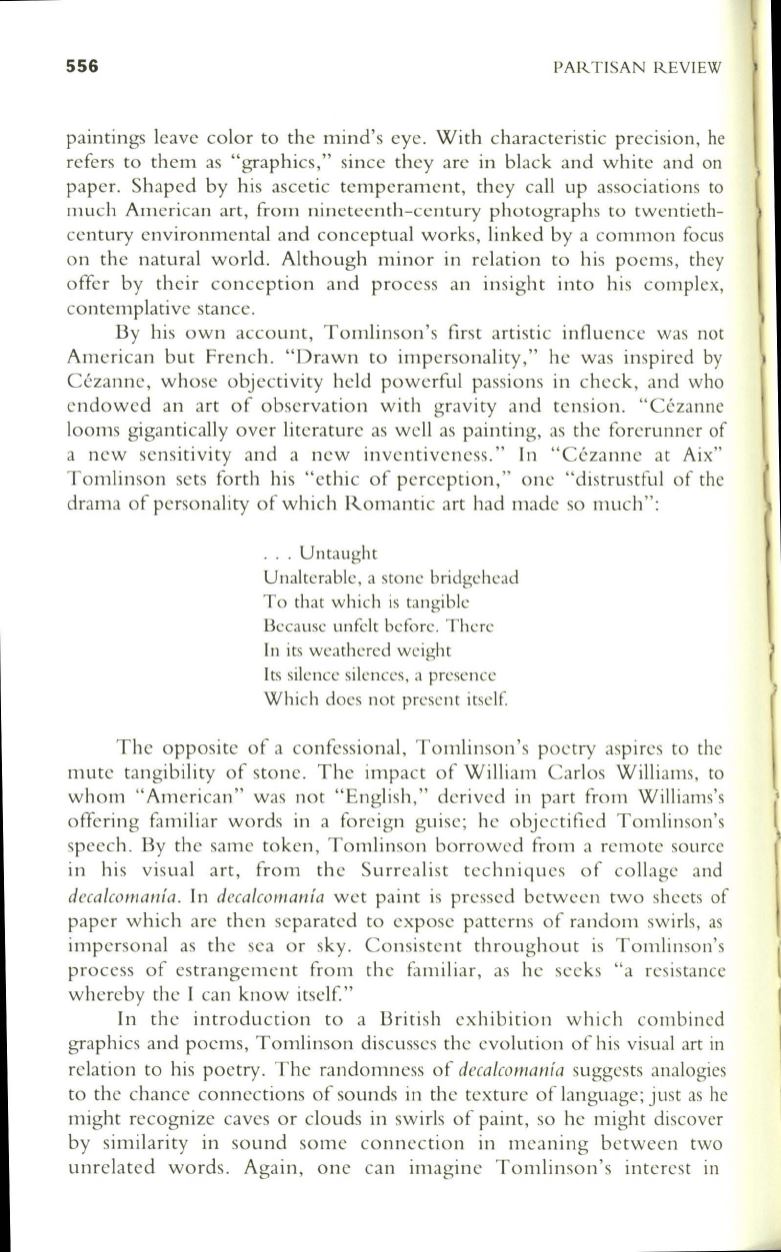
556
PARTISAN REVIEW
paintings leave color to the mind's eye. With characteristic precision, he
refers to them as "graphics," since they are in black and white and on
paper. Shaped by his ascetic temperament, they call up associations to
much American art, from nineteenth-century photographs
to
twcntieth–
century environmental and conceptual works, linked by a common focus
on the natural world. Although minor in relation to his poems, they
offer by their conception and process an insight into his complex,
contemplative stance.
By his own account, Tomlinson's first artistic influence was not
American but French. "Drawn to impersonality," he was inspired by
Cezanne, whose objectivity held powerful passions in check, and who
endowed an art of observation with gravity and tension. "Cezanne
looms gigantically over literature as well as painting, as the forerunner of
a new sensitivity and a new inventiveness." In "Cezanne at Aix"
Tomlinson sets forth his "ethic of perception," one "distrustful of the
drama of personality of which Romantic art had made so much":
... Untaught
Unalterable, a stone bridgehead
To that which is tangible
Because unfelt before. There
In its weathered weight
Its silence silences, a presence
Which does not present itself.
The opposite of a confessional, Tomlinson's poetry aspires
to
the
mute tangibility of stone. The impact of William Carlos Williams, to
whom "American" was not "English," derived in part from Williams's
offering familiar words in a foreign guise; he objectified Tomlinson's
speech. By the same token, Tomlinson borrowed from a remote source
in his visual art, from the Surrealist techniques of collage and
decalcomania.
In
decalcomania
wet paint is pressed between two sheets of
paper which are then separated to expose patterns of random swirls, as
impersonal as the sea or sky. Consistent throughout is Tomlinson's
process of estrangement from the familiar, as he seeks "a resistance
whereby the I can know itself"
In the introduction to a British exhibition which combined
graphics and poems, Tomlinson discusses the evolution of his visual art in
relation to his poetry. The randomness of
decalcomania
suggests analogies
to the chance connections of sounds in the texture of language; just as he
might recognize caves or clouds in swirls of paint, so he might discover
by similarity in sound some connection in meaning between two
unrelated words. Again, one can imagine Tomlinson's interest in


